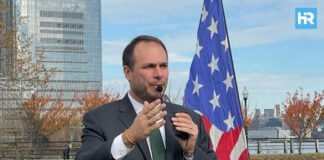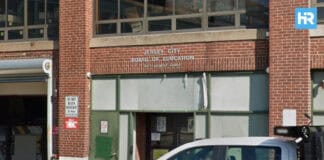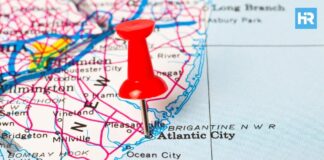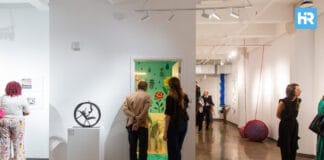The City of Hoboken is working on its first Curbside Mobility and Parking Action Plan. This new plan focuses on how to use public space along the city’s streets more effectively. Most of Hoboken’s 270,000 square feet of curbside space is used for parking, but the city needs this space to support other uses like deliveries, biking, walking, bus stops, and outdoor dining.
To help create this plan, the Department of Transportation and Parking is asking for feedback from residents, business owners, and visitors. People can share their opinions through an online survey available at hobokennj.gov/curbmanagement until May 30 at 11:59 p.m. Also, the city is hosting two public meetings: one in person on May 14 from 6:30 to 8:00 p.m. at Wallace Elementary School (1100 Willow Avenue), and one online on May 22 from 6:00 to 7:30 p.m.
This feedback will be used to complete the Curbside Action Plan by summer 2025. The plan will also help the city reach its Vision Zero goal, which is to prevent all traffic-related deaths and serious injuries by 2030.
- Hoboken is collecting public feedback to redesign how its 270,000 square feet of curb space is used.
- Most curb space is used for parking, but demand still exceeds supply and blocks other needs like loading and biking.
- The online Hoboken survey is open until May 30, with two public meetings scheduled to gather input.
Parking Takes Up Most of the Curb, But Demand is Still High
According to the city’s research, most of Hoboken’s curb space is used for parking, but it still isn’t enough. Hoboken has issued more than 12,500 active resident and business parking permits, but there are only about 6,300 on-street permit spaces. Thus, on average, there are more than 3.6 permits for every available space. In many places, people have to circle the block for over 10 minutes just to find parking.
It’s also important to understand how people use their cars. Even though 66% of Hoboken households own at least one vehicle, only 20% of residents use a car to commute to work. 42% of parking permit holders use their car three or fewer times each week. As there are many curbside spaces being used to store cars that are not driven often, it only adds to the problem.
Residents and Businesses Want Better Curb Use
To understand what people in Hoboken want, the city began a public engagement process. During the first phase, over 1,000 residents, 60 business owners, and many visitors shared feedback through surveys, an interactive map, and two public workshops.
From these responses, the city learned that double-parking is a common issue. Many people reported that drivers often block bike lanes, crosswalks, and bus stops. Business owners said there is not enough space for deliveries, which often forces delivery drivers to park illegally – 73% of them have mentioned a lack of delivery space is a moderate to major issue.
The public also shared ideas for how the curb could be improved. 65% of residents said Hoboken should offer safe places to bike or use scooters, but only 20% said they currently feel safe doing that. Many also said they want to see more short-term parking spaces for quick pickups or drop-offs, and safer sidewalks and crossing zones for people walking.
City Releases Full Report with Data and Findings
The city put together a 40-page report called the Curb Reimagined Foundations Report, which explains how the curb is currently being used and what can be improved. The report also compares different curb uses based on how much they are used and how much revenue they generate.
For example, curb uses like outdoor dining, loading zones, bike share stations, and car share parking (Corner Car by Zipcar) serve more people each day than traditional parking. Outdoor dining has about 30 interactions per day per space, while loading zones have 20, and bike share stations have 13. In comparison, paid parking only sees about 1.8 interactions per space, and permit parking sees 0.4.
The same is true for revenue. A Corner Car space earns about $104, an EV charging station earns $81, and a bike share station earns $71 per space. Regular paid parking brings in about $8, and permit parking only earns about $2 per space. Even though these other uses perform better, they take up only 5% of curb space.
The City Also Studied Parking Garages and Technology
Besides looking at curbside data, Hoboken studied how off-street parking garages are being used. For instance, Garage B on 2nd Street is used 96% of the time by short-term parkers, and Midtown Garage is only used 28% of the time, meaning some garages could help reduce the pressure on curbside parking.
The city also reviewed 1.57 million paid parking transactions from 2023. It found that 70% of paid parkers stayed for less than two hours, and $7 million in revenue was collected, mostly from high-demand areas like Washington Street, 1st Street, and areas near the Hoboken University Medical Center.
Hoboken is planning to improve its parking systems by using technology. Some garages already use license plate readers, automated payment systems, and digital signs showing space availability. The city is also considering using cameras to reduce illegal parking and building a mobile app to help people find open spots faster.
Other Cities Are Trying Similar Ideas
To learn more, Hoboken officials spoke with leaders from New York City, Washington, D.C., and Pittsburgh. These cities are also using new tools like license plate scanning, digital curb maps, and automated enforcement. In some cases, cities are removing parking meters and switching to online-only systems.
The ideas are being included as Hoboken creates its final plan. The city wants to follow best practices, but also make sure the plan fits local needs.
Final Steps and How to Get Involved
Right now, Hoboken is in the second round of community input. The Curb Reimagined survey is available online until May 30 at 11:59 p.m.. People can also attend one of the two public meetings:
- In-person: May 14 from 6:30 to 8:00 p.m. at Wallace Elementary School, 1100 Willow Avenue
- Online: May 22 from 6:00 to 7:30 p.m., registration at hobokennj.gov/curbmanagement
The final action plan will be ready by summer 2025, and it will guide how curb space is used across the city.






